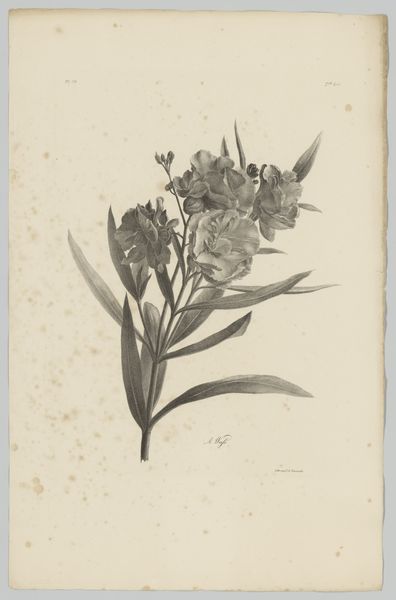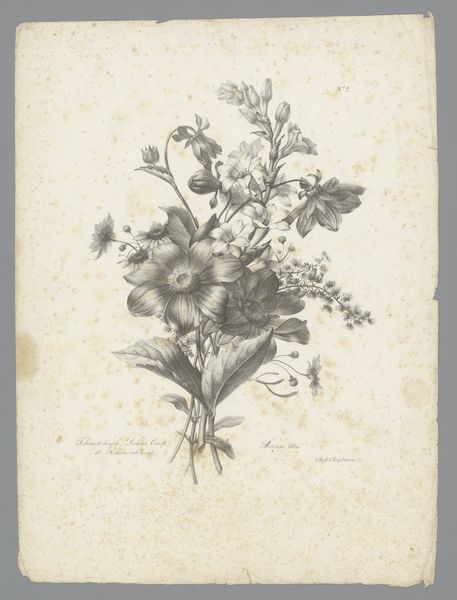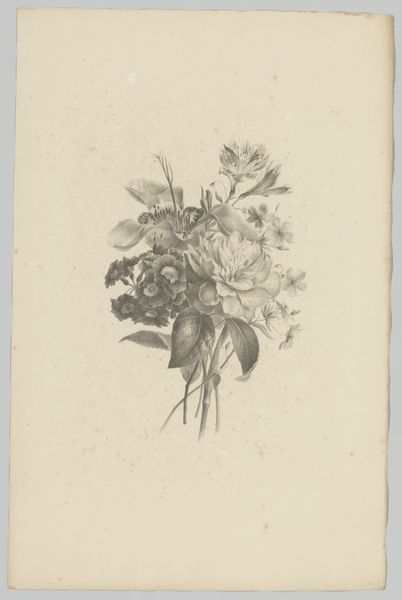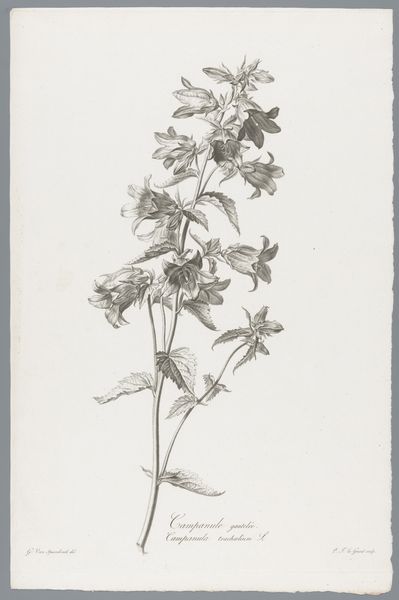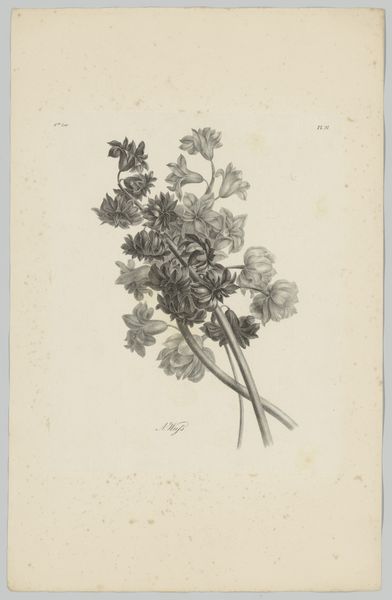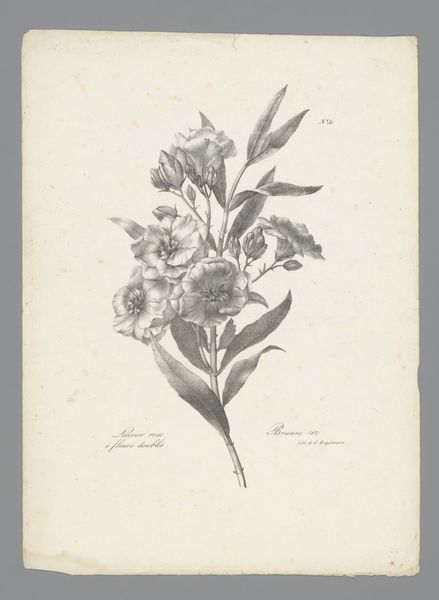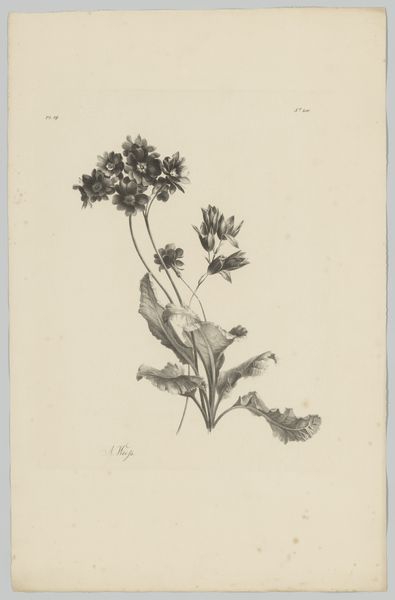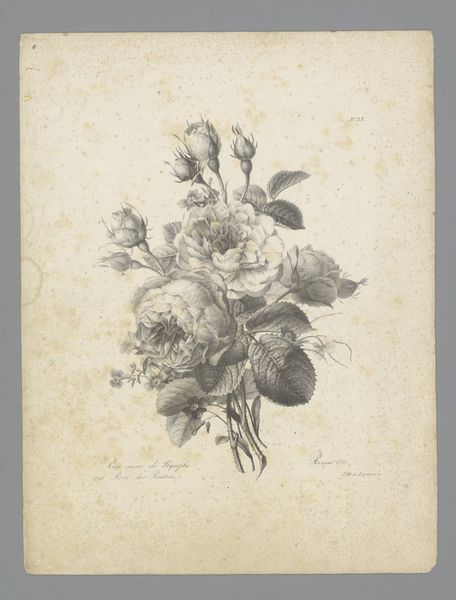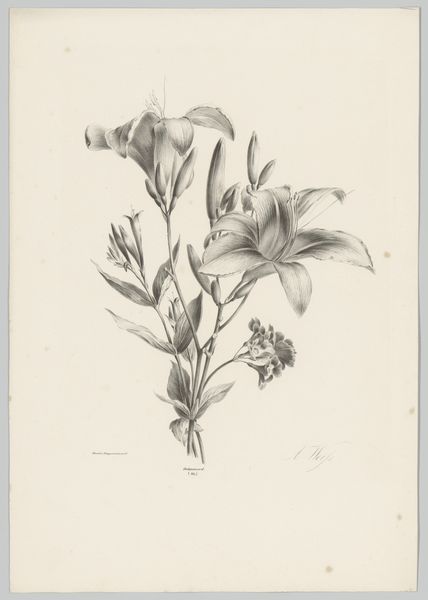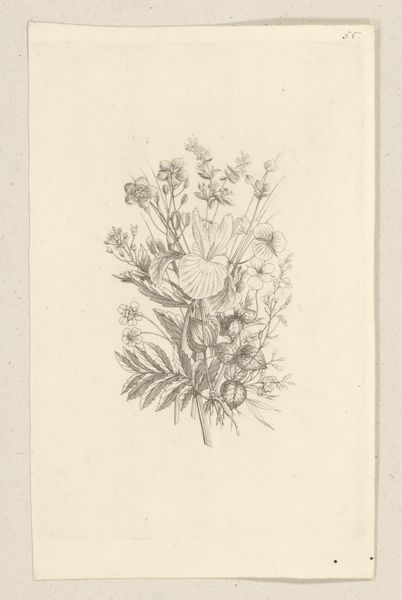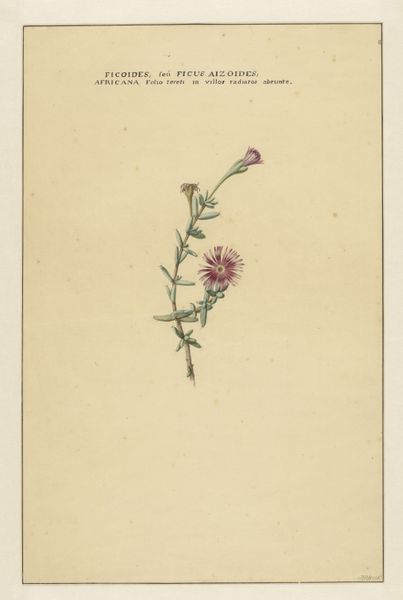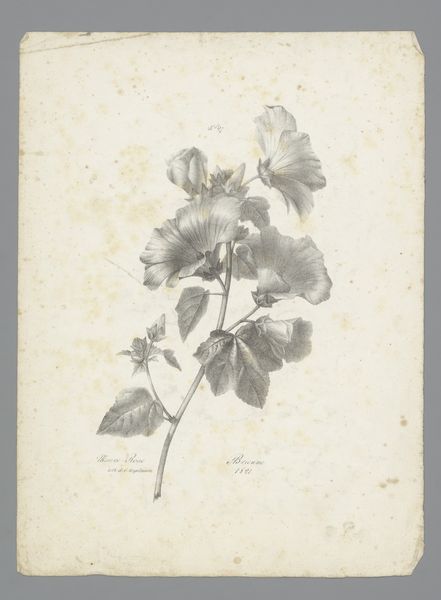
drawing, paper, pencil
#
drawing
#
paper
#
pencil
#
realism
Dimensions: height 362 mm, width 269 mm
Copyright: Rijks Museum: Open Domain
Curator: Here we have "Bouquet with Narcissus, Hyacinth and Primula" created in 1824 by Auguste Piquet de Brienne. It's a beautiful drawing, meticulously rendered with pencil on paper. It's currently held in the collection of the Rijksmuseum. Editor: My first impression is how incredibly delicate it feels. The monochromatic palette emphasizes the textures, almost as if you could reach out and feel the velvety petals and the smooth curve of the leaves. Curator: The choice of flowers is interesting, isn’t it? Narcissus, hyacinth, primula, each carries potent symbolic weight. Narcissus, for instance, often represents vanity and self-love, a reflection of the mythological figure. Editor: Yes, and it speaks to the enduring interest in the language of flowers during the 19th century. I wonder, was this bouquet presented as a gift? A coded message communicated through petals and stems? The floral piece feels restrained though; this feels more academic, less of a statement, than many I've seen from that time. Curator: It’s a good point that it might be for more scientific study. The attention to detail suggests it served as more of botanical record than a sentimental offering. The precision reminds me of works intended for educational illustrations—where capturing accurate features held more weight than purely aesthetic beauty. But as it still bears symbolic potential and meaning, can't one still see it as reflecting period sensibilities? Editor: Perhaps the artist intended to bridge the gap between art and science, something typical of the era when classifications were shifting. The fact that the drawing finds its home in a museum now indicates a change in value over time, too, from natural record to cultural artefact. Curator: Exactly! It reflects changing social attitudes, but reveals enduring, coded social and psychological undertones in its visual symbols of flowers that represent emotional and social codes for viewers today, regardless of their origin. Editor: Thinking about this artwork, and reflecting upon its cultural value, shows how even a seemingly simple still life drawing can reveal so much about art history and how historical values play a significant role in artwork accessibility and significance in present society. Curator: Absolutely! This image provides a window into the convergence of art, science, and social symbolism in early 19th century visual art, revealing a continuous dialogue through its use of specific cultural symbols.
Comments
No comments
Be the first to comment and join the conversation on the ultimate creative platform.
